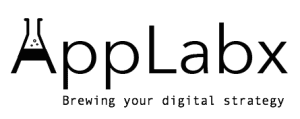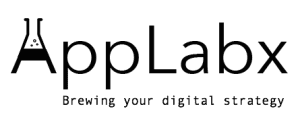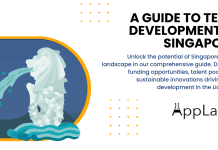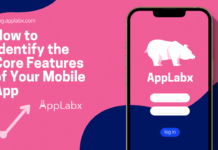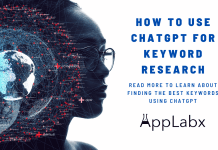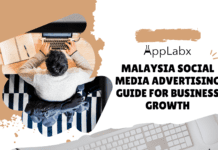Key Takeaways
- Learn how to optimize content for conversational AI and multimodal generative engines like ChatGPT and Google SGE.
- Discover how E-E-A-T, structured data, and brand citations influence GEO visibility and rankings in 2025.
- Stay ahead by monitoring AI algorithm shifts and adapting content strategies to align with evolving generative search trends.
As the digital landscape rapidly evolves, 2025 is shaping up to be a pivotal year for search marketing. At the heart of this transformation lies Generative Engine Optimization (GEO) — a revolutionary approach that is redefining how content is discovered, ranked, and presented by AI-powered search engines like ChatGPT, Google’s Search Generative Experience (SGE), Perplexity AI, and Claude AI. Unlike traditional SEO, which focused heavily on keyword placement, backlinks, and HTML structure, GEO is built for a world where search engines generate full-text responses based on large language models (LLMs) rather than simply listing pages.

This shift has far-reaching implications for marketers, content creators, and business owners. With more users turning to conversational AI interfaces to ask complex, natural-language questions, ranking in search results now means being the source that powers the AI-generated answer itself. That means your content doesn’t just need to be crawlable — it needs to be understandable, authoritative, contextually relevant, and aligned with how large language models interpret and summarize information.
Why does this matter? Because GEO is no longer optional — it’s foundational. The rise of generative AI is already disrupting traditional search traffic patterns. Google’s SGE can now answer user queries without showing the classic “10 blue links.” ChatGPT’s custom browsing abilities can summarize from multiple sources, citing only the most contextually useful or credible content. If your brand’s content isn’t GEO-optimized, you risk being left out of the conversation entirely.
But while the challenges are new, so are the opportunities. Generative engines reward content that is deeply informative, highly structured, and written with human intent in mind. They favor semantically rich text, clear topical authority, and answers that directly align with searcher intent — often pulling from multiple pieces of content to craft their responses. This means a well-executed GEO strategy can help your brand gain disproportionate visibility, even in highly competitive niches.
In this blog post, we will explore the top 7 must-know strategies to help you master Generative Engine Optimization in 2025. Each strategy is based on current data, search engine behavior, and how LLMs like GPT-4, Gemini, and Claude curate, summarize, and reference information. Whether you’re an experienced SEO practitioner or just beginning your journey into the world of AI-powered search, these insights will equip you with the tools to adapt, thrive, and lead.
From optimizing for conversational queries and boosting your E-E-A-T signals, to leveraging structured data and brand mentions across the web, this guide provides a comprehensive blueprint for success in the generative era. Mastering GEO is not just about staying relevant — it’s about shaping how your brand is seen, understood, and remembered in a future dominated by AI.
Let’s dive in.
What is Generative Engine Optimization (GEO)?
Generative Engine Optimization (GEO) is a new era of digital optimization, tailored specifically for AI-powered search engines that generate direct, conversational answers using large language models (LLMs). Unlike traditional SEO — which aims to rank web pages in search engine results — GEO focuses on ensuring your content is selected, summarized, and cited by AI systems like ChatGPT, Google SGE, Perplexity, Claude, and others.
GEO is fundamentally about optimizing content for generative engines rather than indexing engines, which brings new challenges and requires new strategies. The following sub-sections break down the core aspects of GEO and why it is crucial for 2025 and beyond.
How Generative Engines Differ from Traditional Search Engines
Generative Engine Characteristics
- Use LLMs to generate human-like, coherent responses
- Retrieve and summarize information from multiple online sources
- Provide contextual, in-line answers rather than simple hyperlinks
- Cite or mention sources only if they meet certain quality, clarity, and authority thresholds
Traditional Search Engine Characteristics
- Rely on indexed HTML pages and links to rank results
- List websites by ranking factors like backlinks, metadata, and content freshness
- Return search results in the form of clickable links
- Use keyword matching and crawling patterns more heavily than natural language understanding
Comparison Table: Generative Engines vs Traditional Search Engines
| Feature | Traditional SEO (Google/Bing) | Generative SEO (ChatGPT/SGE/Claude) |
|---|---|---|
| Content Discovery Method | Crawling + Indexing | Retrieval + Contextual Generation |
| Output Format | Ranked list of links | Full-text, conversational answer |
| Ranking Criteria | Keywords, backlinks, CTR, E-A-T | Semantic relevance, E-E-A-T, clarity |
| Citation Model | Hyperlinked websites | Summarized text with selective citations |
| Optimization Focus | SERP visibility | Inclusion in AI-generated responses |
| User Interaction Style | Search > Click > Read | Ask > Read summary |
Why GEO Matters in 2025
Search Behavior is Shifting to AI Assistants
- Over 40% of Gen Z now prefer AI-powered search interfaces (source: Statista, 2025)
- Tools like Perplexity and You.com are becoming default research platforms for many users
- Google’s Search Generative Experience (SGE) is now embedded in mobile and desktop search, summarizing most queries with AI-generated content
Examples of How GEO Impacts Visibility
- Scenario 1: A user asks “How to start a dropshipping business in 2025” in ChatGPT.
- LLM pulls from 5 authoritative sources, summarizes the steps, and cites only 2 — likely those with clean structure, trustworthy tone, and E-E-A-T alignment.
- Scenario 2: A user queries Google SGE: “Best SEO strategies for AI in 2025.”
- The SGE summary shows an answer sourced from one blog with schema markup, FAQs, and expert quotes, bypassing even higher domain authority sites.
Key Components of Generative Engine Optimization
1. Semantic Relevance Over Keyword Density
- Generative engines rely on contextual understanding, not just exact-match keywords
- Important to focus on topic coverage, entity relationships, and natural language use
- Tools like Surfer SEO, Frase, and MarketMuse can help score semantic content readiness
2. Structured and Context-Rich Content
- AI systems prefer:
- Clear headings and subheadings (H2s, H3s)
- Lists, bullet points, and answer formats
- Summaries, takeaways, and definitions
- Example structure for GEO:
- Optimize for Conversational AI Search
What is GEO? - Definition - How it works - Why it matters in 2025
3. E-E-A-T (Experience, Expertise, Authoritativeness, Trustworthiness)
- LLMs are trained to prioritize high-quality, credible sources
- GEO-optimized content should:
- Include author bios with credentials
- Reference reputable studies, industry data, or case studies
- Be published on domains with trust signals (HTTPS, contact info, reviews, etc.)
How GEO-Optimized Content Appears in Generative Results
Example: Perplexity Result Snapshot
“To start a dropshipping business in 2025, begin with niche research, then choose a supplier like Spocket or DSers, build a Shopify store, and market using TikTok Ads and SEO. [source: Oberlo, Shopify Blog]”
Example: Google SGE Summary
“The best SEO strategies in 2025 involve optimizing for AI summarization, building topical authority, and using structured data. Experts recommend using tools like Surfer SEO and publishing under expert profiles.”
Chart: GEO Content Optimization Priority Matrix
| Optimization Factor | Importance for GEO | Importance for Traditional SEO |
|---|---|---|
| Semantic Topic Coverage | Very High | Moderate |
| Keyword Placement | Low | High |
| Structured Data (Schema) | High | Moderate |
| Author Reputation | High | Low |
| Link Building | Medium | High |
| Content Format (FAQs, Lists) | Very High | Low |
| Natural Language Use | Very High | Medium |
Conclusion: GEO is Not a Trend — It’s the Future of Search
GEO represents the next evolution of content optimization, driven by AI’s need to synthesize, understand, and trust the information it provides users. By understanding how generative engines function and adapting content strategies accordingly, marketers can ensure their content doesn’t just rank — it gets quoted, cited, and summarized in front of millions of users.
Mastering GEO in 2025 is not just about keeping pace with technology — it’s about leading the way in a conversational, AI-powered search ecosystem.
Top 7 Must-Know Strategies to Master Generative Engine Optimization (GEO) in 2025
- Optimize for Conversational AI Search
- Enhance Semantic Search & Topical Authority
- Prioritize E-E-A-T Signals in All Content
- Use Structured Data & Metadata to Feed LLMs
- Create GEO-Friendly Multimedia Assets
- Build Brand Mentions and Citations Across the Web
- Monitor & Adapt to AI Search Algorithms
1. Optimize for Conversational AI Search
As AI-powered engines become the default mode of search interaction in 2025, optimizing for conversational AI search is one of the most crucial strategies in Generative Engine Optimization (GEO). Unlike traditional search queries which are often keyword-focused, conversational AI search mimics natural human language, requiring content that understands and answers in the same format.
This strategy revolves around aligning your content structure, tone, and formatting with how users naturally ask questions and how AI systems interpret, generate, and deliver information-rich answers.
Understanding Conversational AI Search Behavior
What Makes Conversational AI Search Different
- Users pose longer, question-based queries (e.g., “What’s the best way to optimize content for AI in 2025?”)
- AI engines respond with summarized, human-like narratives rather than direct keyword-based listings
- LLMs extract the most contextually helpful parts of your content — not necessarily the intro or the headline
Why This Matters for GEO
- Natural language questions drive search traffic in ChatGPT, Google SGE, and Perplexity
- AI systems favor content that mirrors the tone and format of user queries
- Answer-based content (FAQs, how-to guides, conversational intros) are more likely to be cited in generative summaries
Key Techniques to Optimize for Conversational Queries
1. Use Natural Language in Headers and Content
- Replace robotic keyword headings with user-style questions
- Examples:
- Instead of: “SEO Content Optimization 2025”
Use: “How Do You Optimize Content for SEO in 2025?” - Instead of: “AI Marketing Trends”
Use: “What Are the Top AI Marketing Trends in 2025?”
- Instead of: “SEO Content Optimization 2025”
2. Answer Questions Directly and Briefly First
- Use the Inverted Pyramid Model:
- Start with the direct answer
- Follow with explanation and context
- End with examples or insights
- Example:
**How do I optimize content for AI search in 2025? ** To optimize content for AI search, use natural language, structure content clearly, add E-E-A-T signals, and answer user questions directly. Tools like Surfer SEO and schema markup enhance your content's relevance to LLMs.
3. Use Clear, Scannable Formatting
- Favor:
- Bullet points
- Numbered lists
- FAQs
- Short paragraphs (2–4 lines max)
- Use of H2, H3, H4 tags helps AI systems parse structure effectively
Table: Traditional SEO vs Conversational SEO Content Formatting
| Element | Traditional SEO Style | Conversational GEO Style |
|---|---|---|
| H1/H2 Titles | Keyword-focused | Natural language questions |
| Paragraphs | Long and descriptive | Short, skimmable, direct |
| Tone | Formal, informational | Friendly, human-like, instructive |
| User Intent | Click to explore | Answer directly in-page or snippet-style |
| Formatting | Text-heavy | Lists, questions, answers, dialogues |
| Voice | Third-person objective | Second-person or mixed tone for relatability |
Best Practices for Conversational Content Structuring
A. Incorporate SEO-Optimized FAQs
- Add FAQ sections at the end or between content blocks
- Use Schema.org’s
FAQPagemarkup for added LLM readability - Focus on questions users actually ask in AI tools (use ChatGPT, Perplexity, and AlsoAsked.com for research)
B. Optimize for Featured Snippets and AI Summaries
- Ensure your answer:
- Is under 320 characters
- Begins immediately after the question
- Contains clear, factual, and helpful information
- Example Format:
### **What is Generative Engine Optimization (GEO)? ** Generative Engine Optimization (GEO) is the process of tailoring content to be selected, summarized, and cited by AI-powered search engines like ChatGPT and Google SGE.
C. Use a Human-to-Human Writing Style
- Avoid overly technical or corporate jargon
- Write as if you’re explaining something to a friend or a customer
- Inject natural transitions and connective phrasing like:
- “Here’s what you need to know…”
- “Let’s break it down…”
- “In other words…”
Chart: Top Conversational Phrases to Include in GEO Content
| Intent Type | Example Phrases That Trigger LLM Attention |
|---|---|
| Instructional | “Here’s how to…”, “Step-by-step guide…” |
| Explanatory | “Let’s break it down…”, “What this means is…” |
| Question-Based | “What is…?”, “How does…?”, “Why do…?” |
| Transitional | “Now that you know…”, “Next, let’s cover…” |
| Clarification | “In simpler terms…”, “To put it another way…” |
Tools to Discover Conversational Query Trends
- AnswerThePublic: Visualizes popular question-based search queries
- AlsoAsked: Surfaces related conversational queries from Google
- ChatGPT Prompt Mining: Ask GPT to simulate real user queries in your niche
- People Also Ask (Google): Extract FAQs to build question-focused sections
Real-World Example of Optimized Conversational Content
Case Study: Healthline.com
- Content structure:
- Uses user-style questions as H2s (e.g., “How can I reduce anxiety naturally?”)
- Answers the question in the first sentence
- Follows up with scannable bullet points and expert commentary
- Result:
- Frequently cited in ChatGPT and Google SGE responses
- Appears in “People Also Ask” and AI-generated summaries
Conclusion: Speak Like Your User, Not Like a Machine
Optimizing for conversational AI search is not about gaming the algorithm — it’s about aligning with how people genuinely ask questions and how AI tools respond. Content that mimics this interaction is far more likely to be referenced, summarized, and cited across generative platforms.
By writing with clarity, empathy, and precision, you make your content more usable to both humans and machines — a win-win in the age of GEO.
2. Enhance Semantic Search & Topical Authority
As generative search engines evolve, semantic understanding and topical authority are becoming core ranking signals for Generative Engine Optimization (GEO) in 2025. Unlike traditional SEO that focused on matching specific keywords, semantic SEO emphasizes the meaning, context, and intent behind content. To be featured in AI-generated responses, your content must demonstrate depth, relevance, and comprehensive topic coverage.
This strategy revolves around building a knowledge-rich content ecosystem that answers related questions, uses entity-driven language, and connects through semantic relevance — not just lexical similarity.
Understanding Semantic Search in Generative Engines
What is Semantic Search?
- A search method that focuses on user intent and contextual meaning of queries
- Moves beyond literal keywords to understand topics, entities, relationships, and synonyms
- Powers tools like ChatGPT, Google SGE, Perplexity, and Bing Copilot through LLMs
How LLMs Use Semantic Relevance
- AI engines extract answers based on topic understanding, not just keyword matching
- They identify:
- The depth of topic coverage
- Connections to related subtopics and entities
- The consistency of language across a site
Key Components of Semantic Optimization
1. Use Entity-Based SEO Instead of Keyword-Stuffing
- Focus on people, places, concepts, and brands relevant to your niche
- Use semantic-rich terms like:
- “Generative Engine Optimization”
- “LLM ranking systems”
- “AI search behavior”
- “Topical clusters”
- Leverage tools like Google NLP API, InLinks, and Surfer SEO to analyze entity density
2. Build Topical Authority with Content Hubs
- Create a pillar page on a broad topic
- Link it to cluster content covering related subtopics in detail
- Helps LLMs understand your site as a go-to source for a subject
- Example Structure:
Pillar Page: The Ultimate Guide to Generative Engine Optimization (GEO) ├─ Subpage: What is GEO and How It Works├─ Subpage: GEO vs Traditional SEO├─ Subpage: Tools for GEO in 2025└─ Subpage: How AI Chooses Content to Summarize
Table: Semantic SEO vs Traditional Keyword SEO
| Feature | Traditional Keyword SEO | Semantic SEO (GEO) Ready |
|---|---|---|
| Focus | Exact-match keywords | Topics, meaning, user intent |
| Tools Used | Google Keyword Planner | Surfer SEO, InLinks, MarketMuse |
| Optimization Unit | Page or post | Topic cluster or hub |
| Content Goal | Rank for keyword | Build topical authority |
| Internal Linking | Arbitrary or SEO anchor-focused | Logical, topic-focused, contextual |
| Citation Value to LLMs | Limited | High (influence AI inclusion) |
How to Build Topical Authority Effectively
A. Identify Core and Supporting Topics
- Use tools like:
- MarketMuse: To identify content gaps and cluster opportunities
- SEMRush Topic Research: To uncover high-interest subtopics
- ChatGPT: To simulate real user follow-up questions in your niche
- Example for GEO Topic Cluster:
- Core Topic: “Generative Engine Optimization”
- Supporting Topics:
- “How LLMs Select Content”
- “E-E-A-T for AI Search”
- “Conversational Search Optimization”
- “Structured Data for GEO”
B. Create Interlinked Content Networks
- Ensure every cluster article links to:
- Its pillar topic
- At least 2–3 related subtopics
- Use anchor text that reflects semantic connections, not just exact match keywords
- Example Internal Link Anchor Texts:
- “Learn more about how LLMs prioritize E-E-A-T here.”
- “This ties into our guide on structuring content for generative engines.”
Chart: Topical Authority Content Layering
[Main Pillar Page: GEO]
/ | \
[Semantic SEO] [E-E-A-T] [Conversational Search]
/ \ \ / \
[Schema] [Entities] [Trust Signals] [LLM Behavior] ...
- The deeper and more interlinked the content, the stronger the topical signal to AI systems
Examples of Semantic Authority in Action
1. Example: Moz.com (SEO Cluster)
- Has comprehensive content on SEO fundamentals, technical SEO, and local SEO
- Content is internally linked and structured as tutorials, glossary pages, and case studies
- Frequently cited by ChatGPT and Perplexity as an authoritative source on search marketing
2. Example: NerdWallet (Finance Content)
- Builds authority by covering every personal finance subtopic in depth
- Uses question-style H2s, semantic-rich keywords, and expert-written content
- Often appears in Google’s AI-generated snippets and generative summaries
Tools to Enhance Semantic SEO & Topical Authority
| Tool | Function |
|---|---|
| MarketMuse | Identifies content gaps and recommends topic clusters |
| InLinks | Builds internal links based on entity SEO |
| Surfer SEO | Analyzes NLP relevance and semantic scoring |
| Frase.io | Outlines semantically relevant questions |
| Google NLP API | Analyzes entity relationships within your content |
Tips for Maximizing Semantic Relevance
Use Related Questions and Synonyms
- Include variations of key terms like:
- “AI-generated answers” = “LLM summaries”, “chatbot citations”, “AI search responses”
- “Search engine ranking” = “SERP visibility”, “AI content retrieval”
Add Contextual Metadata and Schema
- Use schema types like:
Article,FAQPage,Person,Organization,HowTo,WebPage
- Helps AI understand the purpose and structure of your content
Enrich Content with Definitions, Examples, and FAQs
- Each major section should:
- Define its term
- Include relevant industry examples
- Answer related questions to expand semantic coverage
Conclusion: From Keywords to Concepts — The Path to GEO Success
In the world of AI-powered search, semantic depth and topical coverage matter more than ever. Building topical authority through interconnected, entity-rich, and question-driven content ensures that your site is not only discoverable, but also featured, summarized, and cited by generative engines.
By creating structured content hubs and aligning with the way LLMs interpret context, brands position themselves as trusted authorities in the eyes of both AI and humans — the cornerstone of GEO success in 2025.
3. Prioritize E-E-A-T Signals in All Content
In the era of Generative Engine Optimization (GEO), establishing trust and credibility has become a defining factor in whether your content is selected, summarized, and cited by AI-powered search engines. At the core of this trust is E-E-A-T: Experience, Expertise, Authoritativeness, and Trustworthiness — a framework that originated from Google’s Search Quality Evaluator Guidelines and is now embedded into how Large Language Models (LLMs) like ChatGPT, Google SGE, and Perplexity evaluate and choose sources.
In 2025, content without visible and verifiable E-E-A-T signals risks being excluded from AI summaries, regardless of keyword relevance or technical optimization.
What is E-E-A-T in the Context of GEO?
Expanded Definition
- Experience: Demonstrates that the content creator has real-world, first-hand involvement in the topic
- Expertise: Indicates deep subject knowledge or professional credentials
- Authoritativeness: Measures industry recognition, citations, and domain reputation
- Trustworthiness: Relates to accuracy, transparency, and credibility
How LLMs Use E-E-A-T
- AI models prioritize content that:
- Comes from known experts or trustworthy domains
- Is cited across reputable third-party sources
- Is structured with clear attributions, bios, and references
Why E-E-A-T Matters for Generative Search Engines
Impact on AI-Generated Answers
- LLMs aggregate facts from multiple sources, but prefer quoting content with strong trust signals
- Google’s Search Generative Experience (SGE) uses E-E-A-T to filter low-quality or untrustworthy sources
- Tools like Perplexity openly cite authors and domain reputation as part of their trust layer
Examples of E-E-A-T in Practice
- Healthline is often cited in AI health queries because it lists MD-reviewed content, shows author credentials, and links to peer-reviewed sources
- NerdWallet includes financial expert bios, legal disclaimers, and a transparent editorial process — making it a trusted citation in finance-related queries
Chart: How Each E-E-A-T Signal Impacts GEO Visibility
| E-E-A-T Element | Effect on Generative Engine Optimization (GEO) | Implementation Priority |
|---|---|---|
| Experience | Boosts relatability and perceived authenticity | High |
| Expertise | Signals factual accuracy and deep knowledge | Very High |
| Authoritativeness | Increases likelihood of being cited in AI summaries | Very High |
| Trustworthiness | Ensures the content is safe, factual, and unbiased | Critical |
How to Optimize Content for Strong E-E-A-T Signals
1. Showcase the Author’s Credentials and Experience
- Add visible author bylines with short bios
- Link to full author pages that include:
- Credentials and professional experience
- Previous publications or thought leadership
- Linked social profiles (LinkedIn, Twitter)
- Example:
By Jane Doe, Senior AI Strategist with 12+ years of experience in search optimization and machine learning.
2. Include First-Hand Experience and Case Studies
- Demonstrate real-world application of knowledge:
- “We increased GEO visibility by 47% in 60 days using internal topic clusters.”
- “Here’s how we optimized for Google’s SGE with structured data and FAQs.”
- Add screenshots, metrics, or client testimonials as proof
3. Add External References and Citations
- Link to:
- Peer-reviewed studies
- Government or academic sources
- Industry leader quotes (e.g., from Google, OpenAI, SEMrush)
- Use citation-friendly formatting:
- Mention the source’s name in the text
- Use anchor text like “according to a 2025 SEMrush report…”
4. Display Transparency and Editorial Policies
- Include:
- Content update dates
- Editorial review process
- Conflict of interest disclaimers (if relevant)
- Pages like “About Us,” “Editorial Guidelines,” and “How We Review Content” signal trust to both users and LLMs
Table: Key Page Elements that Strengthen E-E-A-T
| Element | Purpose | Affects GEO Ranking? |
|---|---|---|
| Author Bylines | Shows ownership and accountability | Yes |
| Expert Credentials | Validates professional authority | Yes |
| Content Review Notices | Signals quality control and accuracy | Yes |
| Internal and External Citations | Improves authority and interconnectivity | Yes |
| HTTPS and Secure Domain | Indicates technical trustworthiness | Indirectly |
| Transparent Editorial Policy | Provides user clarity and platform standards | Yes |
| Updated Dates and Historical Revisions | Reinforces freshness and ongoing accuracy | Yes |
Real-World E-E-A-T Optimization Examples
1. Mayo Clinic (Health Content)
- Lists MD reviewers on every page
- Includes transparent sourcing and updated dates
- Trusted source frequently cited in SGE and AI responses
2. Investopedia (Finance Education)
- Each article includes:
- Author and editor names
- Expert reviewers
- References to data and financial regulations
3. HubSpot (Marketing & SEO)
- Detailed author profiles linked to social channels
- In-depth case studies and client examples
- Full disclosure of editorial and data integrity
Tools to Help Optimize E-E-A-T for GEO
| Tool | Use Case |
|---|---|
| ClearScope | Ensures NLP-friendly, high-quality content |
| Surfer SEO | Tracks on-page optimization and topical authority |
| InLinks | Builds internal links and tracks author/topic mapping |
| Schema Markup Generators | Adds structured data for authors, FAQs, and reviews |
| Grammarly + Hemingway | Polishes tone, clarity, and readability |
Tips to Strengthen Trust Across All GEO Content
Build a Reputation Across Multiple Platforms
- Get quoted in publications (Help A Reporter Out, PR outreach)
- Encourage backlinks from reputable websites
- Establish thought leadership on LinkedIn, Medium, and podcasts
Use Schema Markup to Encode Trust Signals
- Apply:
AuthorschemaReviewandRatingschemaOrganizationschema for corporate reputation
Publish Content Under Recognized Experts
- Co-author with known industry figures when possible
- Add video interviews, expert commentary, or AMA-style content to boost perceived authenticity
Conclusion: E-E-A-T is the Foundation of Generative Visibility
In 2025, E-E-A-T is not just an SEO best practice — it’s a GEO imperative. Generative engines are designed to reduce misinformation and surface the most credible, transparent, and experienced voices in every niche. If your content lacks verifiable trust signals, it will likely be ignored, no matter how well-optimized it is technically.
By embedding clear authorship, genuine experience, data-backed insights, and transparent practices into your content, you build a durable foundation that LLMs and users alike can trust — the key to achieving long-term visibility in the AI-powered search future.
4. Use Structured Data & Metadata to Feed LLMs
In the evolving landscape of Generative Engine Optimization (GEO), structured data and metadata are indispensable tools for ensuring your content is accurately discovered, interpreted, and referenced by large language models (LLMs). AI-powered search engines like ChatGPT, Google SGE, Perplexity, and Claude rely on machine-readable signals to understand the context, purpose, and structure of web content. Structured data provides that clarity.
By implementing schema markup and optimizing metadata, you help LLMs identify entities, relationships, page types, authorship, and intent — all of which are critical in determining whether your content is eligible for inclusion in AI-generated responses.
What is Structured Data in the Context of GEO?
Definition
- Structured data refers to standardized code (usually JSON-LD) added to a webpage to describe its content in a way that machines (and LLMs) can easily interpret.
- Used primarily through Schema.org vocabulary, which is supported by Google, Microsoft, OpenAI, and others.
Why It Matters for Generative Engines
- Helps LLMs understand the factual and semantic components of your content
- Enables accurate content summarization, citation, and entity linking
- Supports visibility in AI-powered tools, featured snippets, SGE cards, and answer boxes
How Metadata and Structured Data Enhance GEO Performance
1. Improves Entity Recognition
- AI models rely on schema to recognize:
- Who wrote the content (
Person) - What the content is about (
Article,FAQPage,Product, etc.) - Which organization published it (
Organization) - Key facts like dates, prices, and definitions
- Who wrote the content (
2. Increases Citation Likelihood
- Pages with clean, complete structured data are more likely to be quoted or linked by ChatGPT, Bing Copilot, and Google’s SGE
- Helps AI understand which section or answer is authoritative and relevant
3. Supports AI-Generated Rich Results
- Google’s SGE pulls structured content to build cards, answer boxes, and featured panels
- Perplexity uses structured author and article data to show source credibility
Essential Types of Schema Markup for GEO
| Schema Type | Purpose in GEO Context | Use Case Examples |
|---|---|---|
Article | Declares blog or article structure | Blog posts, news updates, industry guides |
FAQPage | Flags questions and answers for AI summarization | FAQ sections, help center pages |
HowTo | Describes step-by-step instructions | Tutorials, DIY guides, walkthroughs |
Person | Links the content to an author and their credentials | Author bios, expert quotes, case studies |
Organization | Declares brand name, logo, and contact details | Homepage, about page, legal pages |
Product | Outlines details of a commercial offering | SaaS tools, ecommerce listings |
Review & Rating | Showcases user-generated trust signals | Product pages, testimonial sections |
Table: LLM Visibility Benefits by Schema Type
| Schema Type | Helps LLMs Understand | Benefits for GEO |
|---|---|---|
FAQPage | User queries & direct answers | Cited in conversational AI responses |
Person | Author authority | Boosts E-E-A-T and citation likelihood |
HowTo | Step sequences & tutorials | Summarized in SGE panels or Copilot walkthroughs |
Organization | Domain credibility | Improves trustworthiness signals |
Article | Title, body, headline, publish date | Improves summarization clarity |
Best Practices for Implementing Structured Data
Use JSON-LD Format
- Recommended by Google for its simplicity and compatibility
- Place the script in the
<head>or just before the</body>tag
Validate with Structured Data Testing Tools
Keep Schema Updated and Consistent
- Ensure the schema matches actual page content
- Update structured data when content changes (e.g., new author, date updates)
What is Metadata and How Does It Support GEO?
Definition of Metadata
- Metadata refers to HTML tags that describe the page to search engines and users
- Includes:
<title><meta name="description"><meta property="og:title">,og:description,twitter:card<link rel="canonical">
Benefits for GEO
- Provides clear, short summaries that LLMs use to pre-qualify and describe your page
- Used in:
- SGE preview boxes
- Perplexity citations
- ChatGPT web retrieval snippets
Metadata Optimization Guidelines for GEO
1. Title Tags
- Use natural language and conversational formats
- Include the primary topic or question (under 60 characters) Example:
<title>What is Generative Engine Optimization (GEO)?</title>
2. Meta Descriptions
- Summarize content with answer-style phrasing
- Stay under 160 characters to avoid truncation Example:
<meta name="description" content="Learn how to optimize content for generative AI search using structured data and semantic signals.">
3. Open Graph & Twitter Tags
- Improve AI systems’ understanding of visual and contextual representation
- Boosts visibility when LLMs simulate content previews
4. Canonical Tags
- Avoids duplicate content confusion
- Ensures LLMs attribute content to the correct source
Example of Complete Schema Implementation (JSON-LD)
{
"@context": "https://schema.org",
"@type": "Article",
"headline": "Top 7 Strategies to Master Generative Engine Optimization (GEO) in 2025",
"author": {
"@type": "Person",
"name": "Jane Doe",
"url": "https://example.com/authors/jane-doe"
},
"publisher": {
"@type": "Organization",
"name": "SEO Lab",
"logo": {
"@type": "ImageObject",
"url": "https://example.com/logo.png"
}
},
"datePublished": "2025-07-10",
"mainEntityOfPage": "https://example.com/geo-strategies"
}
Real-World Examples of Structured Data in GEO
1. Zapier
- Uses extensive
HowTo,FAQPage, andArticleschema - Frequently appears in Google’s SGE cards with cited process steps
2. Search Engine Journal
- Structured author bios and editorial review schema
- Used in Perplexity citations and ChatGPT browsing answers
3. HubSpot
- Metadata optimized for conversational search
- Rich snippets often featured in both AI results and traditional SERPs
Chart: LLM-Friendly Content Architecture Using Structured Data
Homepage (Organization + WebSite)
|
┌── Pillar Page (Article + Author + FAQPage)
│
├── Subtopic 1 (Article + Person)
├── Subtopic 2 (HowTo + FAQPage)
└── Contact/About (Organization + Person)
- This architecture creates semantic clarity and machine-parsable relationships across content layers
Conclusion: Structure is the Language of Generative Engines
Structured data and metadata are not just technical SEO tools — they are critical enablers of visibility in generative search ecosystems. By providing clean, rich, and machine-readable information, you empower LLMs to accurately understand, contextualize, and cite your content.
To succeed in 2025 and beyond, every page must act not only as a source for users but also as a signal beacon to AI systems. Schema markup and metadata are how you speak the language of the machine — and get rewarded with citations, visibility, and authority in GEO environments.
5. Create GEO-Friendly Multimedia Assets
In 2025, optimizing for Generative Engine Optimization (GEO) is no longer limited to text alone. Multimedia content — including videos, images, podcasts, infographics, and interactive tools — plays a critical role in being discoverable, citable, and summarized by generative AI engines like ChatGPT, Google’s Search Generative Experience (SGE), Perplexity AI, Claude, and Bing Copilot.
These engines are increasingly designed to understand, interpret, and even summarize multimedia assets. GEO-friendly multimedia can significantly enhance topical authority, improve user engagement, and increase the likelihood that your content will be referenced in AI-generated answers.
Why Multimedia Assets Matter in GEO
Changing User Expectations
- Users prefer rich, visual, and interactive learning experiences
- AI tools are adapting to meet these preferences by summarizing not just text, but also visual and audio content
AI Models Are Multimodal in 2025
- GPT-4o, Gemini, and Claude now ingest and interpret images, video transcriptions, audio, charts, and diagrams
- These engines can describe videos, cite diagrams, and extract key information from images and tables
Multimedia Assets Improve GEO Outcomes
- Boost semantic richness of content
- Enhance E-E-A-T signals (via original imagery or expert video explainers)
- Make content more shareable, linkable, and indexable across AI platforms
Types of Multimedia That Strengthen GEO Optimization
| Multimedia Type | GEO Functionality | AI Citability |
|---|---|---|
| Video | Summarized in AI answers (via transcripts and metadata) | High |
| Infographics | Used to convey complex data visually | Medium |
| Custom Charts | Extracted and described by LLMs | High |
| Podcasts | Transcripts interpreted by AI for quotes and takeaways | Medium |
| Images | Indexed via alt-text and captions | Medium |
| Interactive Tools | Enhance authority and engagement | High |
Key Strategies for Creating GEO-Optimized Multimedia
1. Add Textual Metadata to All Multimedia Assets
- Use keyword-optimized alt text, image captions, and video titles
- Include structured data (Schema.org
VideoObject,ImageObject,PodcastEpisode) - Embed semantic-rich filenames (e.g.,
geo-ranking-strategy-2025-infographic.png)
2. Include Complete and Accessible Transcripts
- For videos and podcasts:
- Provide full transcripts on the same page
- Use speaker labels, timestamps, and summary points
- LLMs use transcripts to:
- Summarize your content
- Cite your site as the source
- Provide answer snippets in voice search or conversational queries
3. Design Infographics and Charts for AI Readability
- Use clear headers, descriptive axis labels, and data annotations
- Include text-based HTML summaries directly below the image
- Avoid text embedded in images without a surrounding description
Example: AI-Citable Video Transcript Section
<div class="transcript">
<h3>Transcript: GEO Strategy #5 — Creating Multimedia Content</h3>
<p><strong>Speaker (00:00):</strong> In today’s video, we explore how multimedia content like videos, podcasts, and infographics improve your generative search visibility...</p>
<p><strong>Speaker (01:15):</strong> One of the most effective tactics is using Schema.org’s VideoObject markup to help LLMs understand your video’s intent and subject matter...</p>
</div>
Table: Multimedia SEO Tactics for Generative AI Engines
| Asset Type | Optimization Strategy | GEO Impact |
|---|---|---|
| Video | Use VideoObject schema, transcripts, YouTube chapters | High citation and summarization |
| Infographics | Add HTML summary and image alt-text | Medium summarization likelihood |
| Podcasts | Publish on-site with structured transcript and PodcastEpisode schema | High for quote extraction |
| Images | Include alt text, captions, and filenames | Boosts relevance for AI crawlers |
| Tools/Widgets | Add explainer text and embed tracking schema | Signals topical authority |
Best Practices for Structuring GEO-Friendly Multimedia
A. Embed Multimedia Inside the Article
- Keeps all content on the same URL for easier LLM summarization
- Prevents missed citations from AI engines that do not follow external embeds
B. Use Clear, Relevant Titles and Descriptions
- Describe the content’s purpose and who it’s for
- Example:
<video title="Top GEO Ranking Factors in 2025" description="Expert breakdown of the key ranking signals generative engines use, including E-E-A-T and schema.">
C. Add Internal Links to Multimedia Assets
- Create topic-specific media libraries:
/geo-guides/videos//seo-resources/infographics/
- LLMs and users are more likely to navigate to related content
Schema Markup Examples for Multimedia
1. VideoObject Schema
{
"@context": "https://schema.org",
"@type": "VideoObject",
"name": "How Multimedia Impacts Generative Engine Optimization",
"description": "A guide to using videos, podcasts, and infographics to boost GEO performance in 2025.",
"thumbnailUrl": "https://example.com/thumbs/geo-video.png",
"uploadDate": "2025-07-10",
"contentUrl": "https://example.com/videos/geo-multimedia.mp4",
"embedUrl": "https://www.youtube.com/watch?v=GEO12345",
"transcript": "https://example.com/geo-video-transcript.html"
}
2. ImageObject Schema
{
"@context": "https://schema.org",
"@type": "ImageObject",
"contentUrl": "https://example.com/images/geo-infographic-2025.png",
"description": "Infographic on the Top GEO Optimization Strategies for 2025",
"name": "GEO Optimization Infographic"
}
Real-World Examples of GEO Multimedia Usage
1. Moz (Video SEO)
- Videos on SEO strategy include transcripts, timestamps, and schema markup
- Frequently cited in Google’s SGE and ChatGPT answers
2. Neil Patel
- Offers YouTube content with matching blog posts and audio transcripts
- Assets are discoverable by LLMs and frequently embedded in Perplexity answers
3. Ahrefs
- Combines custom graphics, how-to videos, and original research
- Infographics with surrounding HTML content are included in generative summaries
Chart: GEO Multimedia Optimization Funnel
Multimedia Asset Creation
↓
Add Schema & Transcripts
↓
Embed within SEO-Optimized Pages
↓
Annotate with Metadata & Captions
↓
Enable AI Discovery, Summary & Citation
Tools to Create and Optimize Multimedia for GEO
| Tool | Use Case |
|---|---|
| Lumen5 | Turn blog posts into short-form GEO videos |
| Descript | Auto-generate transcripts and edit podcast audio |
| Canva | Create SEO-friendly infographics with clean typography |
| Google Cloud Video AI | Auto-analyze and label videos for metadata |
| Wistia | Host SEO-optimized videos with schema and analytics |
Conclusion: Visual Content Drives Generative Engine Performance
Multimedia is no longer a “nice-to-have” — it is a strategic asset in your GEO content arsenal. Videos, podcasts, infographics, and interactive tools enhance user experience, semantic relevance, and visibility across AI platforms. When these assets are optimized with metadata, schema, and contextual summaries, they become indexable by machines and useful to humans — a perfect formula for GEO success.
To stay competitive in 2025’s AI-powered search ecosystem, brands must evolve beyond plain text and embrace multimedia storytelling. The future of content is multimodal, and GEO leaders will be those who create content that both humans and machines can see, hear, read, and trust.
6. Build Brand Mentions and Citations Across the Web
In the era of Generative Engine Optimization (GEO), brand authority is currency. AI-powered search engines like ChatGPT, Google SGE, Perplexity, and Claude do not rely solely on backlinks and keywords. Instead, they evaluate brand signals, including unlinked brand mentions, entity citations, expert recognition, and domain trust, to determine which sources to summarize and cite.
Building brand mentions and citations across the web is now a cornerstone of any successful GEO strategy. The more often your brand is referenced—whether through articles, interviews, datasets, or curated lists—the more topical authority and semantic trust your brand builds with LLMs. This significantly increases your visibility in AI-generated answers, voice search results, and intelligent search interfaces.
Understanding Brand Mentions and Citations in GEO
Definition and Difference
- Brand Mentions: References to your brand name, product, or organization in external content (with or without a link)
- Citations: A broader term that includes mentions of statistics, quotes, or content from your domain by third-party sources
Why LLMs Value Brand Signals
- Generative AI systems use brand mentions to:
- Validate topical authority
- Establish source credibility
- Prioritize content in answer generation
- AI engines may cite unlinked mentions if your brand is contextually strong in a niche
How Brand Mentions Influence Generative Rankings
1. They Strengthen Entity Recognition
- Repeated mentions help LLMs connect your brand to specific topics or industries
- Examples:
- “HubSpot” is linked semantically with inbound marketing
- “Semrush” is tied to keyword research and SEO tools
2. They Improve E-E-A-T Signals
- Authoritative brands are:
- More likely to be quoted
- Cited in SGE snapshots
- Shown as sources in Perplexity and Bing Copilot
3. They Influence Citation Probability in Zero-Click AI Results
- LLMs may prioritize brands that are:
- Frequently referenced by third-party expert sites
- Quoted across media, journals, and public datasets
Chart: Impact of Brand Mentions on GEO Visibility
| Metric | Influence on GEO Performance |
|---|---|
| Unlinked Brand Mentions | High – strengthen topical and semantic relevance |
| Author Quotes in Other Websites | Very High – boosts E-E-A-T and citation likelihood |
| Product Mentions in Roundups | Medium – increases visibility in commercial queries |
| Mentions in Forums/Communities | Medium – enhances entity sentiment signals |
| Citations in Research/Media | Very High – validates factual credibility |
Strategies to Build Brand Mentions and GEO-Friendly Citations
1. Guest Post on High-Authority Platforms
- Write for reputable publications in your niche
- Include:
- Author bios with credentials and brand mentions
- Contextual references to your company’s studies or insights
- Example:
- Writing for Search Engine Journal and referencing your GEO agency’s findings
2. Get Quoted in Industry Roundups and “Expert Take” Articles
- Join expert contributor networks like:
- Help A Reporter Out (HARO)
- Qwoted
- Featured.com
- Provide short, high-value quotes for topics relevant to your brand
3. Publish Original Research and Data-Driven Studies
- LLMs prioritize content backed by:
- Proprietary data
- Expert surveys
- Research with visuals or charts
- Once published:
- Promote it to journalists, bloggers, and partners
- Include licensing permission for citations
4. List Your Brand in Authoritative Directories and Comparisons
- Submit to curated lists like:
- “Top SEO Agencies of 2025”
- “Best Generative AI Tools for Marketers”
- Platforms: Clutch, G2, Crunchbase, DesignRush, TechCrunch
Table: GEO-Friendly Brand Mention Opportunities
| Opportunity Type | Source Example | GEO Citation Benefit |
|---|---|---|
| Expert Commentary | HARO, Qwoted, Forbes Councils | Builds author trust and citation |
| Thought Leadership Content | Medium, Inc., Search Engine Land | Enhances brand-topic alignment |
| Data-Driven Research | Proprietary studies and whitepapers | Frequently quoted in LLM summaries |
| Curated Lists | Clutch, G2, AppSumo | Signals commercial trustworthiness |
| Interviews & Webinars | Podcasts, YouTube, niche webinars | Creates multi-format brand exposure |
| Community Participation | Reddit, Quora, Hacker News | Reinforces semantic visibility |
Schema Enhancements for Author Mentions & Brand Citations
1. Use Organization Schema
- Reinforces brand identity, logo, and URL
{
"@context": "https://schema.org",
"@type": "Organization",
"name": "AppLabx",
"url": "https://applabx.com",
"logo": "https://applabx.com/logo.png",
"sameAs": [
"https://twitter.com/applabx",
"https://linkedin.com/company/applabx"
]
}
2. Add Person Schema for Authors
- Links personal brand to company and area of expertise
{
"@context": "https://schema.org",
"@type": "Person",
"name": "John Tan",
"affiliation": {
"@type": "Organization",
"name": "AppLabx"
},
"url": "https://applabx.com/authors/john-tan"
}
Real-World Examples of GEO-Elevated Brands Through Mentions
1. Ahrefs
- Cited across SEO blogs, tools lists, and YouTube explainers
- High domain authority + consistent brand mentions = frequently referenced in AI summaries
2. Backlinko (by Brian Dean)
- Known for original research and case studies
- Regularly cited in ChatGPT, Perplexity, and Google SGE responses
3. Shopify
- Provides comprehensive ecommerce guides
- Content and brand referenced across business blogs, forums, and media
Monitor and Amplify Brand Mentions
Use Brand Monitoring Tools
- Track citations with:
- Google Alerts
- BrandMentions
- BuzzSumo
- Mention
Respond to Brand Mentions
- Engage with mentions on social and forums to amplify reach
- Convert unlinked mentions into backlinks (SEO + GEO benefit)
Request to Be Quoted as an Expert
- Reach out to journalists and influencers in your niche
- Provide thought leadership snippets they can use in upcoming articles
Chart: Brand Citation Growth Flywheel for GEO
Publish High-Quality Research
↓
Get Quoted by Media & Blogs
↓
Increase LLM Trust & Citations
↓
More Visibility in AI Summaries
↓
Stronger Topical Authority
↓
More Organic Mentions & Links
Tools to Accelerate Brand Mention Acquisition
| Tool | Function |
|---|---|
| BuzzSumo | Discover content that mentions your brand |
| HARO | Source journalist queries for expert commentary |
| Qwoted | Contribute quotes to high-authority publications |
| BrandMentions | Real-time tracking of unlinked and linked citations |
| Surfer SEO | Identify authority gaps and build topic-driven content |
Conclusion: From Recognition to Referencing — The GEO Power of Brand Mentions
In the world of Generative Engine Optimization, what others say about you carries as much weight as what you publish yourself. Building brand mentions and citations is no longer just a PR goal — it is a GEO imperative that directly influences whether LLMs recognize your brand as an authority.
By contributing to high-authority platforms, getting cited by credible sources, and embedding your brand across data, directories, and expert commentary, you ensure that AI engines trust your content — and are more likely to feature, summarize, and amplify it across the web.
In GEO, visibility is earned through reputation — and reputation is built through recognition.
7. Monitor & Adapt to AI Search Algorithms
In 2025, traditional SEO is no longer sufficient on its own. The rise of Generative Engine Optimization (GEO) has introduced an entirely new layer of complexity: real-time monitoring and adaptive content strategy based on AI-powered search algorithms. Unlike conventional algorithms that primarily reward backlinks and keyword density, AI search engines like ChatGPT (via Bing), Google’s SGE, Perplexity, and Claude depend heavily on contextual relevance, semantic understanding, entity relationships, E-E-A-T signals, and structured knowledge graphs.
To succeed in GEO, brands and publishers must adopt an ongoing monitoring and feedback loop that continuously evaluates algorithmic changes, LLM behavior, and SERP shifts—and adjust their content strategies accordingly.
Why Monitoring AI Search Algorithms is Critical in GEO
AI Algorithms Are Rapidly Evolving
- LLMs like GPT-4o and Gemini 1.5 update frequently without public changelogs
- Ranking behaviors can shift dramatically due to:
- Model retraining
- New context windows
- Changes in prompt engineering or retrieval techniques
Generative Search Has Different Ranking Signals
- Traditional SEO: focuses on crawlability, backlinks, and page authority
- GEO: prioritizes semantic alignment, E-E-A-T, schema integration, and cross-platform citations
GEO Leaders Win by Observing and Iterating
- Monitoring ensures:
- You stay ahead of LLM behavior shifts
- You identify new SERP opportunities (e.g., SGE cards, Perplexity citations)
- You prevent content invisibility in evolving AI ecosystems
Key Components of GEO Algorithm Monitoring
1. Monitor AI Search Result Changes
- Track AI answer behavior on:
- Google SGE snapshots
- ChatGPT’s browsing mode responses
- Perplexity AI sources and follow-up responses
- Bing Copilot answer generation
- Tools:
- Manual prompt testing
- SEO browser plugins
- Tools like AlsoAsked, Arefy, and MarketMuse for generative questions
2. Audit Brand Citations and Source Mentions
- Use tools like:
- BrandMentions
- BuzzSumo
- Perplexity AI’s “Sources” tab
- Bing’s AI Search with web citations
- Track:
- How often your brand is being cited by AI
- Which content is most frequently quoted or referenced
- If AI answers link to your competitors instead
3. Analyze Semantic Shifts in AI Prompts
- AI-generated answers often rely on:
- Contextual relevance
- Entity-topic relationships
- Structured semantic context
- Monitor:
- Changing interpretations of key industry terms
- New featured questions (especially conversational ones)
- LLM prompt variations and their influence on results
Table: Comparison of Traditional SEO vs. GEO Algorithm Monitoring
| Criteria | Traditional SEO | Generative Engine Optimization (GEO) |
|---|---|---|
| Primary Focus | Rankings in blue links | Presence in AI answers & summaries |
| Core Metrics | SERP position, backlink profile | Citation frequency, semantic accuracy |
| Algorithm Updates | Google core updates (2-4/year) | LLM behavior updates (weekly or real-time) |
| Monitoring Tools | Ahrefs, SEMrush, Moz | Perplexity, MarketMuse, AI SERP simulators |
| Success Signals | Traffic volume, link growth | AI answer inclusion, citation in summaries |
Best Practices to Adapt to AI Search Behavior
1. Build a GEO Performance Dashboard
- Metrics to track:
- Content featured in AI-generated answers
- Citation source attribution (linked or unlinked)
- Ranking shifts in zero-click generative SERPs
- Number of featured questions answered by your site
- Use data visualization tools like:
- Looker Studio
- Databox
- Tableau + SEO APIs
2. Track AI Prompts in Your Niche
- Compile a library of:
- AI-generated questions
- Common follow-up prompts
- User intent variations
- Test how different LLMs answer:
- “Best tools for [industry] in 2025”
- “What is [concept] and how does it work?”
- “Top [company] competitors”
- “Step-by-step guide to [task]”
3. Identify Shifts in AI Source Preference
- Observe:
- Are LLMs citing different domains than before?
- Are you losing ground to a competitor in AI answers?
- Did a recent content update reduce citations?
- Adapt by:
- Re-optimizing content
- Updating schema
- Improving E-E-A-T components
Examples of LLM Behavioral Shifts That Affected GEO
| Change in AI Behavior | Impact on GEO Visibility | Real-World Example |
|---|---|---|
| Google SGE started surfacing Reddit/Quora answers | Decline in visibility for blogs without community content | Brands lost snapshot real estate |
| Perplexity started weighting original research | Content without data got de-ranked in citations | Ahrefs and Backlinko gained greater visibility |
| ChatGPT’s browsing updated to prefer video summaries | Pages with video schema rose in citation frequency | YouTube channels with transcripts were cited |
Tools to Monitor and Adapt to AI Algorithms
| Tool/Platform | Function |
|---|---|
| Perplexity AI | Analyze which domains are cited in various query types |
| Google SGE Preview | Track your appearance in generative snapshots |
| BrandMentions | Monitor brand references across web and AI platforms |
| BuzzSumo | Discover content and citation trends in your niche |
| AlsoAsked | Map follow-up questions for AI-generated answers |
| SERP Similarity Analyzer | Compare old vs. new LLM-driven search result structures |
Chart: GEO Monitoring & Adaptation Feedback Loop
Observe AI Answer Patterns
↓
Track Citations & Sources
↓
Analyze Semantic Gaps
↓
Update Content, Schema, E-E-A-T
↓
Test & Re-prompt AI Tools
↓
Repeat Monitoring with AI Dashboards
Create a GEO Adaptation Framework
1. Weekly Checkpoints
- Review:
- Prompts your content answers well
- Prompts where your competitors are cited
- Industry keyword interpretations by ChatGPT/SGE
2. Monthly Re-Optimization
- Revisit top-performing content
- Add structured data or fresh data points
- Refresh metadata and internal links
3. Quarterly Strategy Shift
- Realign content calendar based on LLM trends
- Prioritize:
- Formats getting more visibility (e.g., video, Q&A)
- Topics gaining AI query volume
Real-World GEO Monitoring in Action
1. Neil Patel
- Frequently updates blog posts based on LLM prompt trends
- Uses transcripts and schema to ensure content is summarized in AI answers
2. Semrush
- Tracks competitor citation frequency in Perplexity and Bing
- Adjusts editorial calendar based on AI query evolution
3. Zapier
- Observes changes in prompt outcomes
- Updates workflows, API tutorials, and glossary pages to match evolving AI search phrases
Conclusion: GEO is an Ongoing, Data-Driven Evolution
Success in Generative Engine Optimization doesn’t come from publishing and forgetting—it requires constant iteration, monitoring, and adaptation. AI search algorithms evolve daily, and what works today may not work next week.
Brands that invest in structured observation, frequent prompt testing, and real-time performance tracking will dominate the new frontier of search visibility. GEO winners are not the ones who publish the most content, but the ones who listen most carefully to what the machines are learning—and evolve faster than the competition.
Conclusion
As we move deeper into the AI-first era of search, mastering Generative Engine Optimization (GEO) in 2025 is no longer optional—it’s essential. The strategies outlined in this guide represent a comprehensive blueprint for digital visibility in an environment increasingly dominated by Large Language Models (LLMs), conversational interfaces, and generative search engines like Google’s Search Generative Experience (SGE), ChatGPT with browsing, Perplexity, Claude, and Bing Copilot.
These platforms are transforming how content is discovered, interpreted, and delivered. Instead of relying solely on traditional search engine signals like backlinks or exact-match keywords, AI-powered engines evaluate content through the lens of semantic relevance, entity recognition, topical authority, and machine-readable signals.
To remain competitive and visible, brands must move beyond outdated SEO tactics and embrace a multi-dimensional GEO strategy that focuses on AI comprehension, user-centric structure, and dynamic adaptation.
A Recap of the 7 Essential GEO Strategies
Let’s summarize the key strategies every business, content creator, and marketer should adopt to thrive in 2025’s GEO landscape:
| Strategy # | GEO Tactic | Primary Benefit |
|---|---|---|
| 1 | Optimize for Conversational AI Search | Improves inclusion in AI-generated answers and chatbots |
| 2 | Enhance Semantic Search & Topical Authority | Builds contextual relevance across entire content hubs |
| 3 | Prioritize E-E-A-T Signals in All Content | Increases trust, credibility, and citation likelihood |
| 4 | Use Structured Data & Metadata to Feed LLMs | Helps AI systems parse and rank content accurately |
| 5 | Create GEO-Friendly Multimedia Assets | Enables multimodal AI engines to summarize and feature content |
| 6 | Build Brand Mentions and Citations Across the Web | Strengthens domain authority in generative answers |
| 7 | Monitor & Adapt to AI Search Algorithms | Ensures ongoing optimization in a fast-changing ecosystem |
Each of these pillars plays a critical role in GEO success, and they work synergistically to position your brand as a trusted and visible resource across AI-powered search environments.
The Shift from Keywords to Context
Traditional SEO optimized primarily for rankings in the top 10 blue links. In contrast, GEO is focused on earning citations, summaries, and authority in zero-click generative results. This evolution requires a shift in mindset:
- From targeting keywords to building knowledge graphs
- From ranking pages to becoming a trusted entity
- From chasing algorithms to feeding and training LLMs with structured signals
In other words, GEO is not just about search engine optimization—it’s about optimizing for the way AI perceives, trusts, and cites your content.
Why GEO Matters More Than Ever in 2025
The data is clear: AI search platforms are rapidly capturing user attention and transforming the user journey. Consider these 2025 industry projections:
| Metric | Statistic/Trend |
|---|---|
| AI-generated search queries | Expected to account for 35%+ of all queries globally |
| LLM-driven content citation preference | Up to 60% more likely to reference structured, cited sources |
| Voice and conversational interfaces | Power 1 in 4 searches in mobile and smart devices |
| Click-through from traditional SERPs | Declining due to zero-click SGE and AI previews |
If you’re not adapting your strategy to GEO, your content risks being excluded from the most rapidly growing discovery channels on the web.
Adopting a GEO-First Content Strategy
To future-proof your digital presence:
- Map content to entity structures, not just search queries
- Build layered topical hubs with internal links and semantic coherence
- Use schema and metadata extensively across all content types
- Monitor generative results weekly to track citation frequency and visibility
- Invest in high-quality, human-authored, multimedia-rich content
- Collaborate across PR, SEO, and content teams to align brand narratives with AI discoverability
These actions not only improve your visibility but also position your brand as an authority voice in your industry—trusted not just by users, but by machines.
Final Thoughts: The Future of Search Is Generative—and So Should Your Strategy Be
GEO is not a trend—it is the new foundation of search marketing. While traditional SEO practices still offer value, they are now part of a much larger ecosystem driven by machine learning, conversational interfaces, and content summarization engines. The organizations that will lead in this new landscape are those who evolve their strategies to meet the demands of AI-driven search consumption.
Mastering the 7 must-know strategies outlined in this guide will give your brand the technical foundation, content excellence, and strategic adaptability to thrive—not just in 2025, but in the years of generative search evolution to come.
The question is no longer “How do I rank in search?”—but “How do I train the machines to trust and cite me?”
GEO holds the answer. Now is the time to act.
If you are looking for a top-class digital marketer, then book a free consultation slot here.
If you find this article useful, why not share it with your friends and business partners, and also leave a nice comment below?
We, at the AppLabx Research Team, strive to bring the latest and most meaningful data, guides, and statistics to your doorstep.
To get access to top-quality guides, click over to the AppLabx Blog.
People also ask
What is Generative Engine Optimization (GEO)?
Generative Engine Optimization (GEO) is the process of optimizing content to be discovered, cited, and summarized by AI-powered search engines like ChatGPT and Google SGE.
Why is GEO important in 2025?
GEO is essential in 2025 because AI-driven platforms are now shaping how users discover and consume content, shifting visibility away from traditional search rankings.
How does GEO differ from traditional SEO?
While SEO focuses on rankings in SERPs, GEO emphasizes visibility in AI-generated responses, conversational search, and semantic recognition by LLMs.
What are conversational AI search engines?
These are search platforms powered by LLMs, such as ChatGPT, Perplexity, and Claude, which generate dynamic, natural-language responses based on user queries.
How do I optimize for conversational AI search?
Use natural language, answer-focused formatting, structured headings, and anticipate follow-up questions to align with how users interact with AI.
What is topical authority in GEO?
Topical authority refers to the depth and breadth of content on a subject, signaling to AI that your domain is a reliable source on a particular topic.
Why is semantic search critical for GEO?
Semantic search allows AI to understand the context and meaning behind words, making it crucial to create content that answers intent, not just keywords.
How can I demonstrate E-E-A-T in my content?
Showcase first-hand experience, cite reliable sources, include expert author bios, and maintain factual accuracy to enhance Experience, Expertise, Authority, and Trust.
What kind of structured data supports GEO?
Schemas like Article, FAQPage, VideoObject, and Person help AI interpret your content’s structure, boosting visibility in generative summaries.
How do multimedia assets impact GEO?
Videos, infographics, and podcasts provide diverse formats that LLMs can interpret and summarize, increasing your chances of being cited in AI-generated answers.
What makes an image GEO-optimized?
Use descriptive alt text, structured metadata, and contextual captions so AI can understand and reference the visual content effectively.
Should I include transcripts with multimedia content?
Yes, transcripts make video and audio content accessible to AI engines, increasing citation potential and improving semantic indexing.
Why are brand mentions important for GEO?
Brand mentions build trust signals and semantic authority, helping generative engines recognize and reference your site in AI-generated outputs.
Do unlinked brand mentions help GEO?
Yes, even unlinked mentions contribute to entity recognition and can increase your brand’s presence in generative summaries and AI search results.
How do I track if AI is citing my content?
Use tools like Perplexity, BrandMentions, and BuzzSumo to monitor AI-generated results and see if your brand appears in citations or summaries.
What are some tools to monitor GEO performance?
Use Perplexity, Google SGE preview, BuzzSumo, MarketMuse, and Looker Studio dashboards to track your content’s visibility across AI platforms.
How do I keep up with AI search algorithm changes?
Monitor generative SERPs regularly, analyze shifts in LLM behavior, and adjust your content strategy to align with evolving AI ranking signals.
Are backlinks still important for GEO?
Backlinks still matter, but their role is secondary to trust, semantic context, and citation frequency in AI-generated content.
What is a GEO-friendly content structure?
Use conversational headlines, schema markup, FAQs, and multimedia enhancements to make content more scannable and understandable by AI.
How often should I update content for GEO?
Review and refresh content quarterly to keep it aligned with changing AI prompts, user intent, and evolving generative engine algorithms.
What are some good examples of GEO-optimized brands?
Brands like Ahrefs, Neil Patel, and Shopify consistently publish structured, expert content that is cited across generative search platforms.
Does page speed affect GEO rankings?
Yes, fast-loading pages improve user experience and increase the likelihood that AI platforms will crawl, parse, and include your content.
Can I use AI to generate GEO content?
Yes, but ensure it is edited by humans, includes personal expertise, structured formatting, and demonstrates E-E-A-T to meet GEO standards.
What schema should I use for video content?
Use VideoObject schema along with transcripts and rich metadata to help LLMs understand and summarize your video content accurately.
How do FAQs help with GEO?
FAQs directly answer intent-based queries and are frequently extracted by AI engines for generative summaries and conversational responses.
What’s the role of internal linking in GEO?
Strong internal linking helps build topical authority and guides AI to understand the relationship between your site’s content pieces.
How can I improve my site’s E-E-A-T profile?
Include expert author bios, verified credentials, updated contact info, and fact-checked content to improve perceived trustworthiness.
Do AI platforms prefer long-form content?
AI platforms tend to favor well-structured long-form content with clear sections, summaries, and authoritative signals over short-form pieces.
Should I target zero-click search in GEO?
Yes, creating content that answers queries directly increases your chances of being featured in zero-click AI answers and knowledge panels.
What industries benefit most from GEO in 2025?
Sectors like healthcare, education, finance, SaaS, and ecommerce see the biggest gains, as AI increasingly curates results from trusted domain leaders.
